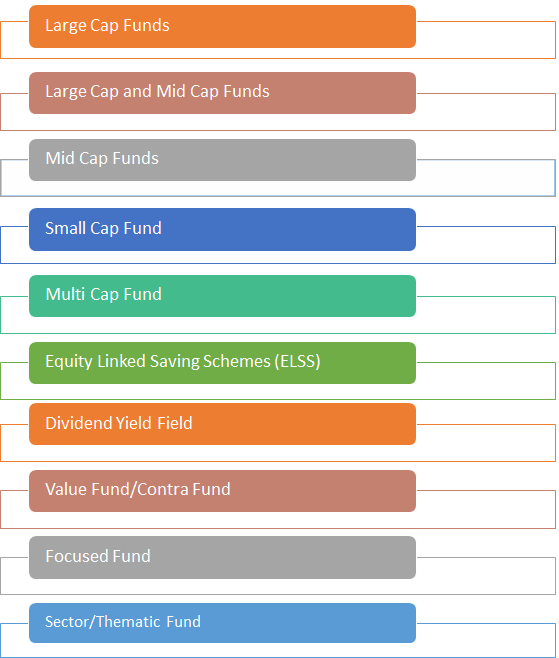
Table of Contents
- What is IDCW in Mutual Funds?
- What is IDCW in Mutual Funds? (Example)
- IDCW vs Growth Option: Key Differences
- IDCW Reinvestment
- Best IDCW Mutual Funds in India 2025
- Best IDCW Mutual Fund (SBI)
- IDCW Payout Calculation
- Taxation of IDCW in Mutual Funds
- Pros and Cons of IDCW in Mutual Funds
- Who Should Invest in IDCW Mutual Funds?
- FAQs
- Conclusion
What is IDCW in Mutual Funds? A Complete Guide
When investing in Mutual Funds, you might have come across the term IDCW (Income Distribution cum Capital Withdrawal). It is a relatively new term introduced by SEBI (Securities and Exchange Board of India) in place of the older Dividend Option. If you're an investor seeking regular payouts from your mutual fund investments, understanding IDCW is crucial. In this article, we will break down everything you need to know about IDCW, its advantages, disadvantages, taxation, and whether it is the right investment choice for you.
What is IDCW in Mutual Funds?
IDCW, or Income Distribution cum Capital Withdrawal, refers to the periodic payout that investors receive from a mutual fund scheme. This payout is not a dividend but a distribution from the fund’s profits and sometimes even its capital. Mutual Funds generate profits from their Portfolio investments, and a portion of these profits is distributed to investors under the IDCW option. However, this reduces the Net Asset Value (NAV) of the scheme, as the amount is deducted from the fund’s corpus.
What is IDCW in Mutual Funds? (Example)
Let's say you invest ₹1,00,000 in an IDCW mutual fund with an NAV of ₹50 per unit. You receive 2,000 units. If the fund declares an IDCW payout of ₹5 per unit, you receive ₹10,000 as a payout, and the NAV drops to ₹45 per unit. The fund's value reduces accordingly.
IDCW vs Growth Option: Key Differences
| Feature | IDCW Option | Growth Option |
|---|---|---|
| Payouts | Periodic payouts | No payouts; reinvested |
| NAV Impact | Falls after payout | NAV increases over time |
| Taxation | Taxed as per individual slab rate | Taxed as Capital Gains |
| Ideal for | Investors needing periodic income | Long-term wealth accumulation |
IDCW vs Growth Taxation
| Investment Type | Taxation Type | Impact |
|---|---|---|
| IDCW Payouts | Taxed at individual slab rate | Higher tax for high earners |
| Growth Option | Capital Gains Tax (LTCG/STCG) | Lower tax with indexation benefits |
Talk to our investment specialist
IDCW Reinvestment
Instead of receiving IDCW payouts, investors can choose the IDCW reinvestment option, where the payout amount is used to purchase additional units of the same mutual fund scheme. This is useful for those who want growth but still opt for the IDCW structure.
Best IDCW Mutual Funds in India 2025
Here are some of the best-performing IDCW mutual funds in India (as of recent data):
✅ HDFC Balanced Advantage Fund - IDCW
Offers a balanced mix of equity and debt, making it less volatile with stable IDCW payouts.
✅ ICICI Prudential Bluechip Fund - IDCW
Focuses on large-cap stocks, ensuring steady returns and reliable IDCW distributions.
✅ SBI Equity Hybrid Fund - IDCW
Diversified Asset Allocation provides stable income while reducing risk.
✅ Mirae Asset Emerging Bluechip Fund - IDCW
Invests in high-growth mid-cap stocks, suitable for investors looking for growth alongside IDCW payouts.
✅ Kotak Equity Opportunities Fund - IDCW
A strong track record in equity Investing makes it a solid choice for IDCW investors.
(Note: Always check the latest fund performance before investing.)
Best IDCW Mutual Fund (SBI)
SBI offers various mutual funds with IDCW options. One of the best-performing SBI Mutual Fund with IDCW is:
- SBI Equity Hybrid Fund - IDCW
- SBI Bluechip Fund - IDCW
IDCW Payout Calculation
You can use an IDCW calculator to estimate your payouts based on your investment amount, NAV, and declared IDCW. These calculators are available on mutual fund websites and financial platforms.
How to Calculate IDCW Payout?
Formula -- IDCW Payout = Number of Units × IDCW per Unit
For example - If you have 2,000 units and the IDCW declared is ₹3 per unit, your payout will be 2,000 × 3 = ₹6,000.
Taxation of IDCW in Mutual Funds
The taxation of IDCW follows the investor’s income tax slab, similar to how dividends were taxed before 2020. Here’s how it works:
- IDCW payouts are added to your total income and taxed as per your slab rate.
- Unlike capital gains in the growth option, IDCW does not benefit from long-term or short-term capital gains tax rates.
- High-income investors may end up paying higher Taxes on IDCW compared to capital gains taxation in the growth option.
Pros and Cons of IDCW in Mutual Funds
Pros:
- Provides regular income, making it suitable for retirees or those seeking periodic cash flow.
- Ideal for low-risk investors who prefer frequent payouts over capital appreciation.
- Offers flexibility with payout frequency (monthly, quarterly, or annually).
Cons:
- NAV reduction post-payout means the investment value decreases.
- Higher taxation compared to the growth option due to slab-based taxation.
- Not suitable for long-term wealth creation, as returns are not compounded.
Who Should Invest in IDCW Mutual Funds?
IDCW mutual funds are best suited for:
- Retirees needing steady income.
- Conservative investors preferring periodic payouts.
- Investors who do not want their returns to be locked in for the long term.
However, if you are looking for long-term wealth creation, the Growth Option is generally more beneficial due to the Power of Compounding and lower tax implications.
FAQs
1. What happens if I choose IDCW reinvestment?
A: Your IDCW payouts are reinvested to buy more units of the same scheme instead of receiving cash.
2. Can I switch from IDCW to Growth in a mutual fund?
A: Yes, you can switch from IDCW to Growth by placing a switch request with your fund house.
3. Is IDCW a good option for SIP investors?
A: IDCW is not ideal for SIP investors since it disrupts compounding benefits. Growth is a better option.
4. How does IDCW affect total returns over time?
A: Since NAV drops after each payout, the overall returns may be lower compared to the Growth option.
Conclusion
IDCW in mutual funds offers a way to receive periodic payouts, making it attractive for certain investors. However, high taxation and NAV reduction make it less suitable for long-term wealth building. If you’re investing for steady income, IDCW may be an option, but for maximum wealth accumulation, the Growth Option remains a better choice. Before choosing IDCW, consider your investment goals, tax liabilities, and need for liquidity. If you are unsure, consulting a financial advisor can help you make the right choice.
All efforts have been made to ensure the information provided here is accurate. However, no guarantees are made regarding correctness of data. Please verify with scheme information document before making any investment.











